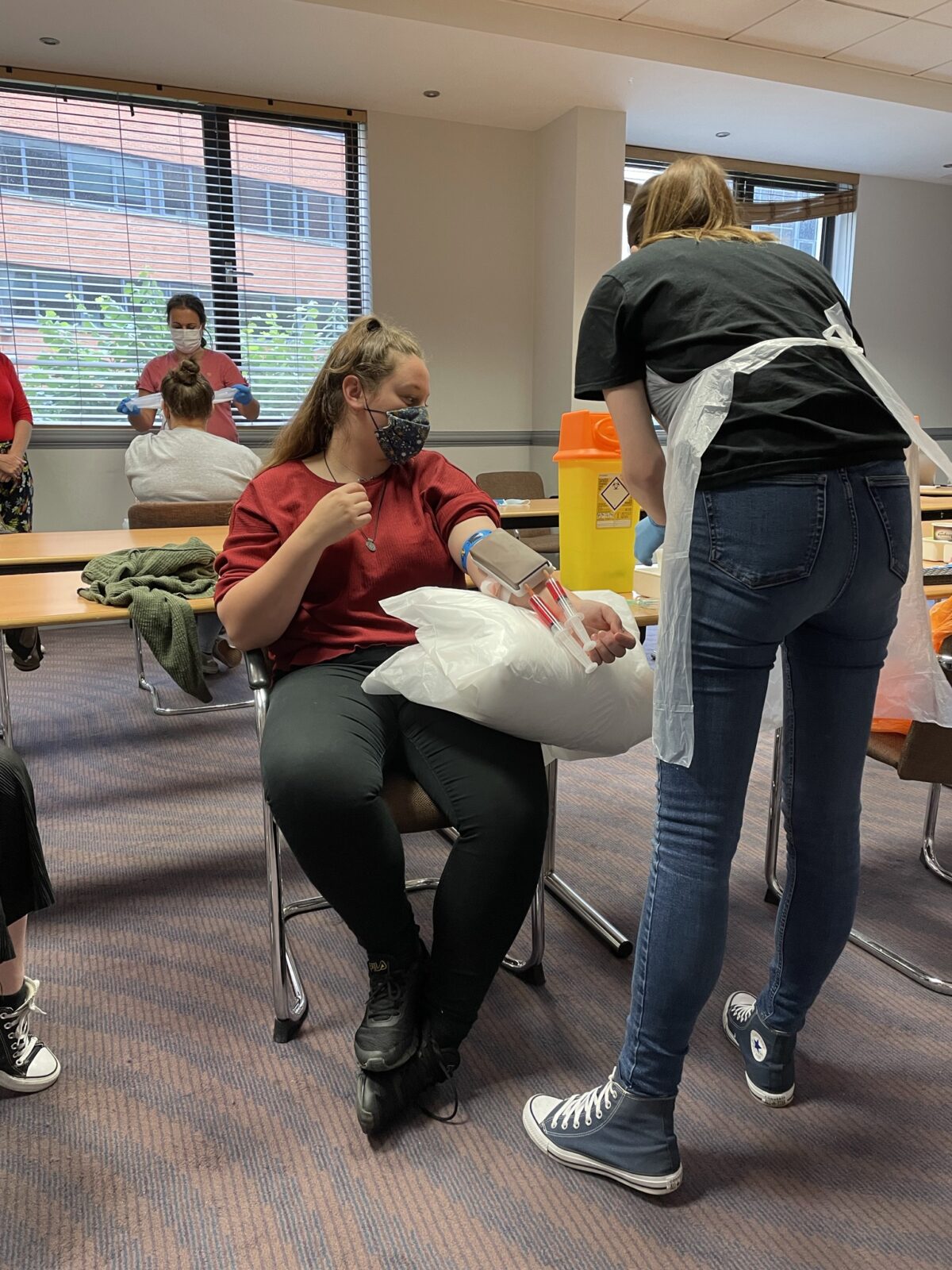5 Simple Techniques For Northeast Medical Institute - New Haven Campus Phlebotomy Course & Cna Class
5 Simple Techniques For Northeast Medical Institute - New Haven Campus Phlebotomy Course & Cna Class
Blog Article
The Best Strategy To Use For Northeast Medical Institute - New Haven Campus Phlebotomy Course & Cna Class
Table of ContentsHow Northeast Medical Institute - New Haven Campus Phlebotomy Course & Cna Class can Save You Time, Stress, and Money.Some Known Incorrect Statements About Northeast Medical Institute - New Haven Campus Phlebotomy Course & Cna Class The Definitive Guide to Northeast Medical Institute - New Haven Campus Phlebotomy Course & Cna ClassThe Best Guide To Northeast Medical Institute - New Haven Campus Phlebotomy Course & Cna ClassWhat Does Northeast Medical Institute - New Haven Campus Phlebotomy Course & Cna Class Do?Some Of Northeast Medical Institute - New Haven Campus Phlebotomy Course & Cna Class
The usage of such tools need to be come with by various other infection prevention and control methods, and training in their use. Not all security devices apply to phlebotomy. Before selecting a safety-engineered device, customers need to extensively check out offered devices to determine their appropriate use, compatibility with existing phlebotomy practices, and efficiency in protecting team and individuals (12, 33).For settings with low resources, expense is a driving variable in purchase of safety-engineered gadgets. Where safety-engineered tools are not readily available, knowledgeable use of a needle and syringe is appropriate.
labelling); transportation conditions; analysis of outcomes for professional monitoring. In an outpatient department or center, give a dedicated phlebotomy cubicle containing: a clean surface area with 2 chairs (one for the phlebotomist and the various other for the individual); a hand clean basin with soap, running water and paper towels; alcohol hand rub. In the blood-sampling space for an outpatient division or facility, supply a comfortable reclining couch with an arm remainder.
Facts About Northeast Medical Institute - New Haven Campus Phlebotomy Course & Cna Class Uncovered
Ensure that the indicators for blood tasting are clearly specified, either in a created method or in documented directions (e.g. in a lab kind). At all times, adhere to the approaches for infection prevention and control detailed in Table 2.2. Infection prevention and control techniques. Accumulate all the devices required for the treatment and location it within risk-free and easy reach on a tray or cart, making certain that all the items are clearly noticeable.
Where the person is grown-up and conscious, adhere to the actions laid out below. Present yourself to the person, and ask the patient to specify their complete name. Inspect that the lab kind matches the person's identity (i.e. match the individual's information with the lab type, to ensure exact identification). Ask whether the patent has allergic reactions, anxieties or has ever fainted during previous injections or blood attracts.
Make the individual comfy in a supine setting (ideally). Place a clean paper or towel under the patient's arm. Discuss the test to be performed (see Annex F) and obtain spoken approval. The individual has a right to decline an examination at any moment before the blood tasting, so it is vital to make certain that the individual has comprehended the procedure.
The Main Principles Of Northeast Medical Institute - New Haven Campus Phlebotomy Course & Cna Class
Expand the person's arm and inspect the antecubital fossa or forearm. Find a blood vessel of a good dimension that shows up, straight and clear. The representation why not try these out in Section 2.3, reveals common settings of the vessels, but several variants are feasible. The median cubital vein lies between muscles and is usually the most simple to puncture.
DO NOT place the needle where capillaries are drawing away, because this enhances the opportunity of a haematoma. Finding the vein will aid in determining the right size of needle.
Samplings from central lines bring a danger of contamination or wrong lab test results. It is acceptable, however not ideal, to attract blood samplings when first presenting an in-dwelling venous tool, prior to attaching the cannula to the intravenous liquids.
The Single Strategy To Use For Northeast Medical Institute - New Haven Campus Phlebotomy Course & Cna Class
Failure to allow sufficient call time increases the risk of contamination. DO NOT touch the cleaned up website; in specific, DO NOT place a finger over the blood vessel to direct the shaft of the subjected needle.
Ask the individual to create a hand so the blood vessels are a lot more popular. Get in the capillary promptly at a 30 degree angle or less, and continue to introduce the needle along the vein at the most convenient angle of entrance - PCT Courses. When adequate blood has actually been gathered, release the tourniquet prior to withdrawing the needle
Northeast Medical Institute - New Haven Campus Phlebotomy Course & Cna Class Things To Know Before You Get This
Take out the needle carefully and use gentle stress to the site with a tidy gauze or dry cotton-wool sphere. Ask the patient to hold the gauze or cotton wool in position, with the arm extended and increased. Ask the person NOT to flex the arm, due to the fact that doing so causes a haematoma.

How Northeast Medical Institute - New Haven Campus Phlebotomy Course & Cna Class can Save You Time, Stress, and Money.
Do not push the syringe plunger due to the fact that additional pressure boosts the threat of haemolysis. Where feasible, keep the tubes in a shelf and relocate the shelf in the direction of you. Inject downwards right into the appropriate coloured stopper. DO NOT remove the stopper due to the fact that it will release the vacuum. If the sample tube does not have a rubber stopper, infuse very slowly right into the tube as decreasing the pressure and rate made use of to move the sampling reduces the risk of haemolysis.

Report this page